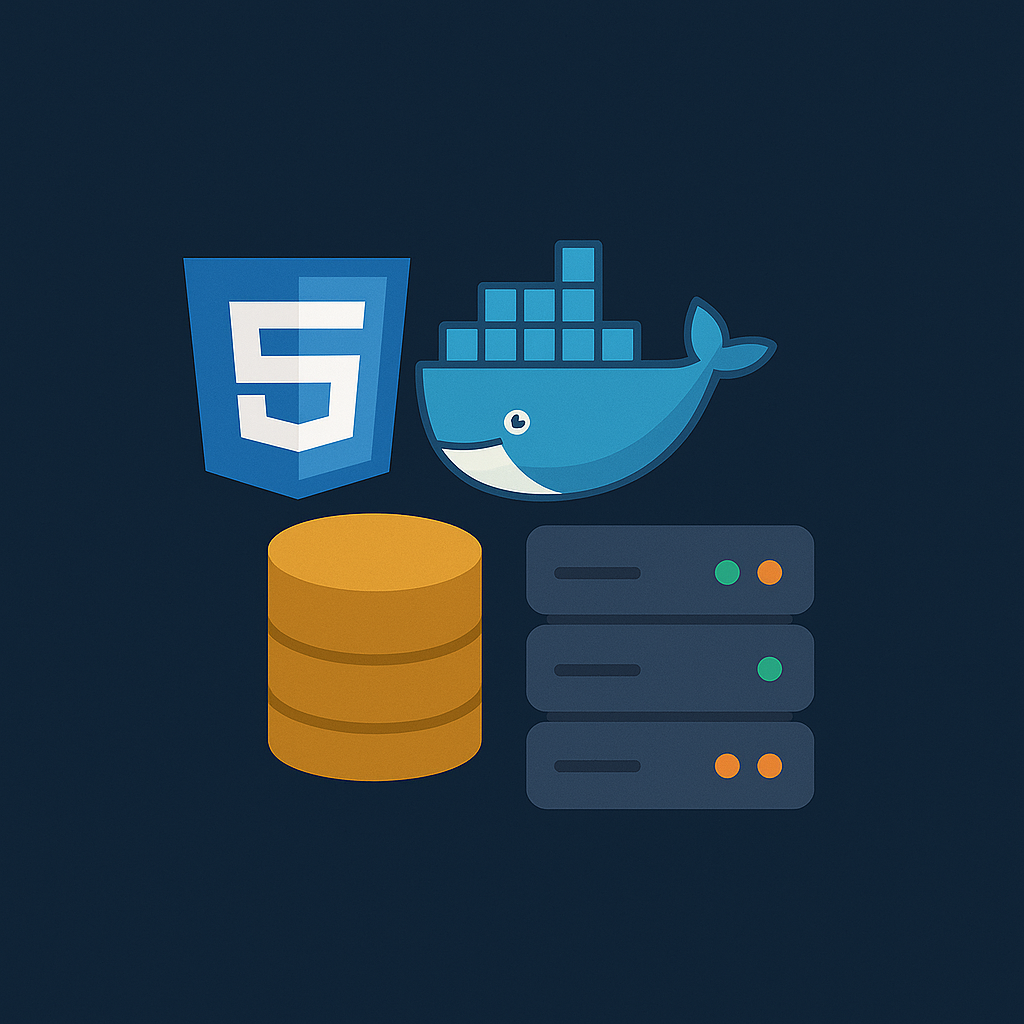Artem's Notes
- Tech & Engineering Insights
- Entrepreneurship & Product Building
- Personal Story & Philosophy
- Future & Industry Thinking
🚀 My Dev Stack for 2025: What I Use and Why
→ Tools, frameworks, infrastructure — explained with opinion, strategy, and real-world examples.

In 2025, the development landscape is more powerful — and more complex — than ever. As a full-stack engineer with 15+ years of experience, my tech stack isn’t about chasing trends. It’s about choosing the right tool for the right job: fast to build, scalable to grow, and intelligent enough to support modern AI workflows.
This is the stack that allows me to ship high-quality apps, services, and platforms — efficiently and sustainably.
🧩 Frontend: React + Tailwind CSS + TypeScript
The frontend is the face of your product — and in 2025, users expect responsiveness, accessibility, and performance as defaults.
- React: Its flexibility, community, and advanced features like Server Components and Suspense make it the best tool for building interactive UIs at scale.
- Tailwind CSS: Utility-first CSS makes styling faster, more consistent, and less error-prone. No more fighting with class names or deeply nested SCSS.
- TypeScript: In any serious frontend project, static typing is a must. TypeScript gives me safety, better autocompletion, and confidence during refactors.
Example: Built a client-facing analytics dashboard with React + Tailwind + shadcn/ui components. TypeScript let us scale features without breaking existing logic.
⚙️ Backend: Node.js, Ruby on Rails, Python (FastAPI), PHP (Laravel + Magento)
The backend is where your logic, data flow, and integrations live. I tailor my choices depending on speed, domain, and the business case.
- Node.js + Express: Perfect for small, fast APIs, middleware services, and real-time apps. Works seamlessly with frontend tools and modern build systems.
- Ruby on Rails: Still one of the fastest ways to build a full-featured web application. Ideal for internal tools, admin panels, and startup MVPs with high iteration needs.
- Python + FastAPI: My choice for AI-heavy apps and microservices. It’s async, Pydantic-powered, and integrates beautifully with ML tooling.
- PHP + Laravel: A joy to work with in full-stack PHP development. Laravel has matured into a top-tier framework with clean syntax, built-in queues, authentication, and more.
- Magento 2.4.7+: When it comes to enterprise e-commerce, Magento still leads. Great for managing catalogs, multiple stores, and complex product logic.
Example: Built an AI-enhanced marketplace using Magento for the storefront, Laravel for vendor dashboards, and FastAPI for recommendation logic. Each backend was optimized for its specific role.
🧠 Machine Learning & AI Stack
AI is no longer optional. In 2025, I integrate intelligent components into nearly every platform — from content tools to support bots and data analysis pipelines.
- Python + FastAPI: For serving models quickly and integrating with external APIs.
- OpenAI (GPT-4o): My default tool for summarization, classification, and text generation. Especially powerful when paired with agents.
- LangChain: Enables advanced agent workflows, memory, context-awareness, and tool usage for AI-driven systems.
- scikit-learn / XGBoost: Still great for traditional ML models like churn prediction, recommendation systems, or forecasting.
- Hugging Face Transformers: Industry-standard for NLP models — from sentiment analysis to document parsing.
- Vector DBs (Pinecone, Weaviate, ChromaDB): Essential for retrieval-augmented generation and semantic search.
Example: Created a support chatbot that reads help tickets, summarizes them with GPT, retrieves solutions from a knowledge base, and syncs data to HubSpot — all using LangChain + FastAPI + Pinecone.
🧱 Microservices Architecture (2025 Edition)
Microservices allow teams to move independently and deploy modular logic. But the real value comes from strategic separation — not blindly breaking up monoliths.
- FastAPI: For lightweight AI/ML microservices.
- Express.js: For JavaScript-based edge APIs or real-time services.
- gRPC / GraphQL Federation: For efficient, strongly-typed service-to-service communication.
- RabbitMQ / Kafka: For event-driven systems where decoupling and scale are key.
- Docker + Kubernetes: For isolated services, scaling, and CI/CD pipelines.
- Nx Monorepo: For teams managing multiple apps with shared logic but enforced boundaries.
Example: A logistics system with 4 microservices — order, pricing (Python), notifications (Rails), and inventory (Laravel) — connected via RabbitMQ and exposed through a unified GraphQL API.
☁️ Infrastructure & DevOps
Infrastructure should support developer velocity without sacrificing reliability. These are my go-to platforms for deploying, hosting, and scaling apps in 2025:
- Docker: Standardized environments and predictable CI/CD.
- Vercel: Zero-config frontend deployment with edge caching and preview environments.
- Fly.io: Global hosting for Rails and Laravel with built-in worker support.
- Supabase: Backend-as-a-service with real Postgres, auth, and storage.
- Laravel Forge: Smooth Laravel deployment automation and server provisioning.
- Magento Cloud: Optimized for high-traffic e-commerce setups with scaling and deployment pipelines.
🛠️ Dev Tools I Use Every Day
- VS Code – For full-stack JavaScript, Python, and quick editing.
- PhpStorm – Best-in-class IDE for Laravel and Magento work.
- Postman – For testing APIs and automation scripts.
- Raycast – Productivity launcher and app controller.
- Figma + Notion – My core design + planning workflow.
- Linear – Clean, modern project management with a dev-first mindset.
- TablePlus – Simple and fast GUI for working with databases.
✅ How I Choose My Stack
These principles guide my decisions when picking frameworks, tools, and architecture:
- 🚀 Rapid MVP delivery
- 📦 Long-term scalability
- 🧠 Low mental load for teams
- 🤖 AI and ML readiness
- 🧩 Clean separation and observability
💬 Final Thoughts
My 2025 dev stack is not about using what’s shiny — it’s about choosing tools that get the job done, grow with the product, and make life easier for the team.
Whether I’m building an AI tool, an e-commerce platform, a set of microservices, or a SaaS dashboard — this stack helps me ship faster and smarter.
Posted on June 2, 2025
– Artem Solianyk
Founder of SKYC & IO SMART HUB | Full-Stack Engineer, Builder, Dreamer